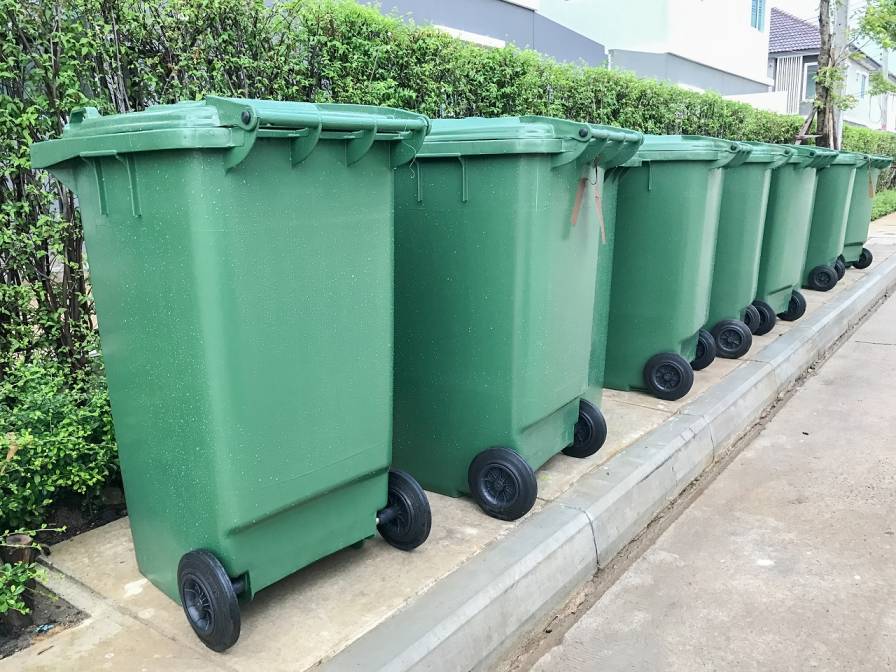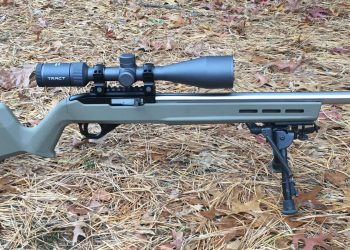Table of Contents
Are you new to wheelie bins? Here are a few things you should know about them:
What are the bins made of?
The bins are made from polyethylene, a robust plastic material capable of withstanding harsh elements such as fungi, acids, and bacteria. Polyethylene is also able to resist dents, cracks, and bending. This makes the bin highly durable as it doesn’t get damaged even when it’s knocked around by the wind, kids, or even animals.
Are the bins waterproof?
Yes, good quality and well-made bins are waterproof. The bodies of the bins are made in one go, which significantly reduces their risk of developing holes. This also comes in handy at making the bins strong and durable.
The bins are made through injection molding, which involves melting the polyethylene granules and injecting the resulting liquid into a mold. This ensures that there are no gaps in the wheelie base, and once you fit them with a lid, they seal completely, keeping the smells in and the rainwater out.
What size of wheelie bin should I go for?
There is no specific bin size you should go for as your choice depends on your trash output and your council’s recommendations. While this is the case, on average, household bins range from 120l to 240l wheelie bins. Of course, the communal and commercial bins are larger and often have larger capacities, with some being as large as 1100 liters!
Does the wheelie bin axle rust?
The wheel axle is made from galvanized steel, which doesn’t stain, corrode or rust easily, so to answer your question, no, the wheelie bin axle won’t rust unless you damage it. The steel used in making the axle is an alloy of iron and a minimum of 10.5% Chromium.
This element produces a thin layer that prevents any corrosion from happening on the surface. This gives you peace of mind that you won’t have to worry about your wheelie bin axle corroding even if you live in the rainiest areas.
What is the difference between offensive and hazardous bins?
Offensive waste is non-infectious waste that can be unpleasant or offensive to the person handling it. An excellent example being dog poop. Hazardous waste is any waste that presents any form of a substantial threat to the public. Whenever you are looking to move hazardous waste, you will need a hazardous bin.
What can you put in the wheelie bin?
You can put any general waste in the bin. A good rule of thumb is to ensure that the waste you put there is compactible. You don’t want to put anything there that can damage the collector’s vehicle or harm the people collecting it. This calls for you to avoid placing wood, metal, or glasses in the bins.
Can you be fined for using wheelie bins?
While councils recommend you use a wheelie bin to control the trash coming out of your home, sometimes you can be fined for misusing the bin. Some of the situations when you can be fined include:
Leaving the bin in the street: You should leave your bin out in the street on the day the refuse collection team is doing its rounds, but it’s an offense leaving the bins out any other time. The reasons are the bins are an eyesore and at the same time cause an obstruction to the neighbors, especially those with pushchairs, wheelchairs, and sight and mobility issues.
Overfilling the bin: Filling up the wheelie bin to the extent that you can’t shut it is viewed as fly tipping, and it can see you being fined. To avoid the fine, if you have a lot of waste, take it to a recycling center and dispose of it there—don’t wait for the refuse collection team as they will fine you.
Failing to recycle the waste: This is where you place the recyclables in the general waste bin instead of the recycling bin, so the recycling team doesn’t have enough waste to work with. Most authorities are working hard towards recycling as much as possible, and they are recommending homeowners to recycle as much waste as they can. You risk being fined when you have the recycling bin but fail to put the recyclable materials there.
Can you use bags in the wheelie bins?
Yes, this is encouraged to keep the bins clean and make the work easy for the trash collectors. Instead of dumping the waste directly in the bins, put them in a bag, then put the bag in the wheelie bin.
The best bags to use are the clear sacks as they allow you to see the waste. It also allows the waste collectors to see whether the waste is contaminated so that they can take the appropriate protective measures.
If you dispose of food waste, put the waste in the compostable bags, then put the bag in the food bin.
You don’t need to put bottles in a bag. Put them directly in the bin.
Are the bins recyclable?
Yes, at the end of their life, you can recycle the bins. As mentioned above, the bins are made from polyethylene, a thermoplastic that can be melted, cooled, and reheated again without loss or reduction in quality.
When the bin cracks or gets damaged, you need to send it to a recycling center where it’s melted, then injection molded and turned into another useful item. It can be turned into another bin, flower vase, or any other item.
What other ways can you use the wheelie bins?
Besides using the bins to collect waste, you can use them in many other ways as they are highly versatile. Some of the other ways you can use them include:
Use them as push lids: Here, they give you easy access to the bin without lifting the lid. These bins are ideal for use in schools, communal areas, and cafeterias.
Use them as bottle lids: These have a wide aperture to accept any bottle, and they are ideal for events and communal recycling centers.
Use them as letter lids: These have a letter slot for accepting paper and cardboard. You can use them for paper recycling indoors or mail collection in the office.








